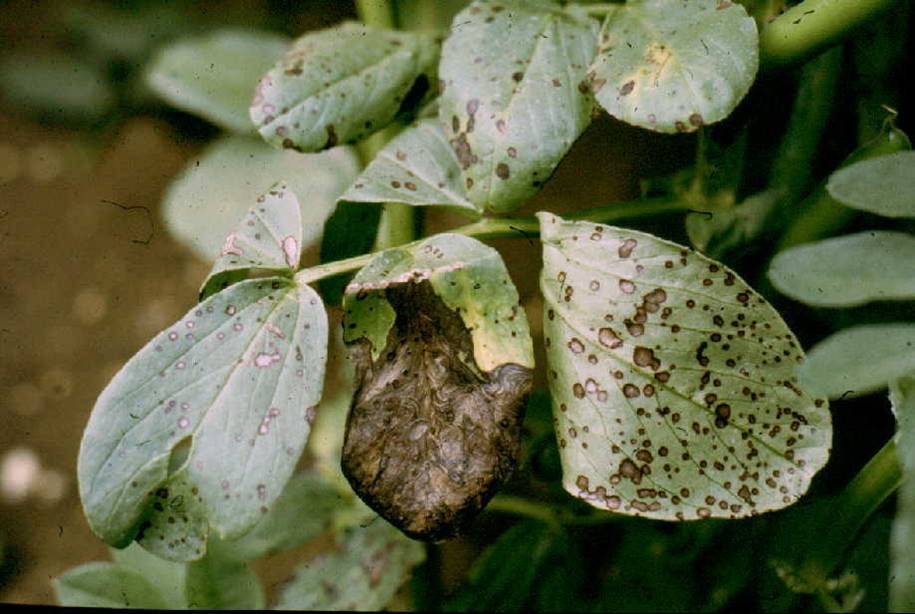
Growers of winter beans are being warned that they must keep well ahead of chocolate spot this season, with signs that the disease is already present at high levels.
Dr. Anthony Biddle, Technical Director of PGRO confirms: "We are definitely seeing more signs of the disease in winter beans than we have done for many years, and also at an earlier growth stage. This is most likely due to the hard winter that the crops have had to withstand, making them more susceptible to disease. Therefore in order to protect yield potential it is essential that a protectant spray is applied before the disease is established."
Dr. Biddle has been assessing the performance of a range of fungicides against both chocolate spot (Botrytis cinerea and B. fabae) and rust (Uromyces fabae) in beans. "Signum has worked very well on rusts and is as good as any of the best products on chocolate spot. It is a very useful product to use in a programme."
He advises that the first application of fungicide should be applied at early flowering stage, with the second application four weeks later.
"The first spray is usually applied at early flowering and targeted just at chocolate spot, with the second spray targeted at both chocolate spot and rusts. It is the growth stage of the crops which should govern the first fungicide treatment, regardless of calendar date."
According to Jonathan Ball, BASF Pulses Product Manager, growers should be gearing up to start their fungicide programme in beans. "Chocolate spot and rust can easily escalate to epidemic proportions, when conditions allow. Chocolate spot can escalate if it is warm and wet and if it stays warm, rusts could become a problem later on in June," he says.
"In trials, Signum gave 74% control of chocolate spot, outperforming other treatments, with its high performance being reflected in yields. In a TAG trial, Signum treatments yielded 3.58 t/ha compared with 2.75 t/ha for the untreated, equal to a yield increase of 0.8 t/ha."
"Chocolate spot is not an easy disease to control and resistance issues need to be considered, which is why it is useful to have a good choice of treatments and to integrate fungicides with different modes of action. With resistance management guidelines in mind, fungicides should be alternated with products from a different cross-resistance group. For example, a programme could start with Signum at T1 and be followed by Sunorg Pro (metconazole) at T2 if the threat from rust increases later in the season," advises Mr. Ball.
Signum contains 67 g/kg pyraclostrobin and 267 g/kg boscalid and is formulated as a water dispersible granule (WDG). It will control rust in winter and spring field beans and provides moderate control of chocolate spot (Botrytis fabae/ botrytis cinerea). It is recommended at a dose rate of 1 kg/ha. Up to two applications can be made with a harvest interval of 21 days. In addition to spring and winter field beans, Signum is also approved for use in vining peas, combining peas, Brussels sprouts, cabbage, cauliflower and carrots.
Sunorg Pro contains 90 g/l metconazole. It controls rust in field beans, combining and vining peas and lupins, as well as reducing Aschochyta pisi and Botrytis in combining and vining peas and lupins and reduction of Mycosphaerella pinodes in combining and vining peas, at a dose rate of 0.8 l/ha. Up to two applications can be made with a harvest interval of 14 days.
